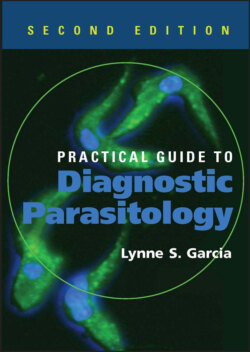Читать книгу Practical Guide to Diagnostic Parasitology - Lynne Shore Garcia - Страница 94
На сайте Литреса книга снята с продажи.
Suggested Reading
ОглавлениеCartwright, C. P. 1999. Utility of multiple stool specimen ova and parasite examinations in a high-prevalence setting, J. Clin. Microbiol. 37:2408–2411.
Hiatt, R. A., E. K. Markell, and E. Ng. 1995. How many stool examinations are necessary to detect pathogenic intestinal protozoa? Am. J. Trop. Med. Hyg. 53:36–39.
Kehl, K. S. C. 1996. Screening stools for Giardia and Cryptosporidium: are antigen tests enough? Clin. Microbiol. Newsl. 18:133–135.
Morris, A. J., M. L. Wilson, and L. B. Reller. 1992. Application of rejection criteria for stool ovum and parasite examinations. J. Clin. Microbiol. 30:3213–3216.
Siegel, D. L., P. H. Edelstein, and I. Nachamkin. 1990. Inappropriate testing for diarrheal diseases in the hospital. JAMA 263:979–982.
Table 3.2 Approaches to stool parasitology: test ordering
Table 3.3 Preservatives and procedures commonly used in diagnostic parasitology (stool specimens)
Table 3.4 Advantages of thin and thick blood films
Table 3.5 Advantages and disadvantages of buffy coat films
Table 3.6 Potential problems of using EDTA anticoagulant for the preparation of thin and thick blood films
Table 3.7 Body sites and possible parasites recovereda
aThis table does not include every possible parasite that could be found in a particular body site. However, the most likely organisms have been listed. Modified from L. S. Garcia, Diagnostic Medical Parasitology, 5th ed., ASM Press, Washington, DC, 2007.
bDisseminated in severely immunosuppressed individuals.
